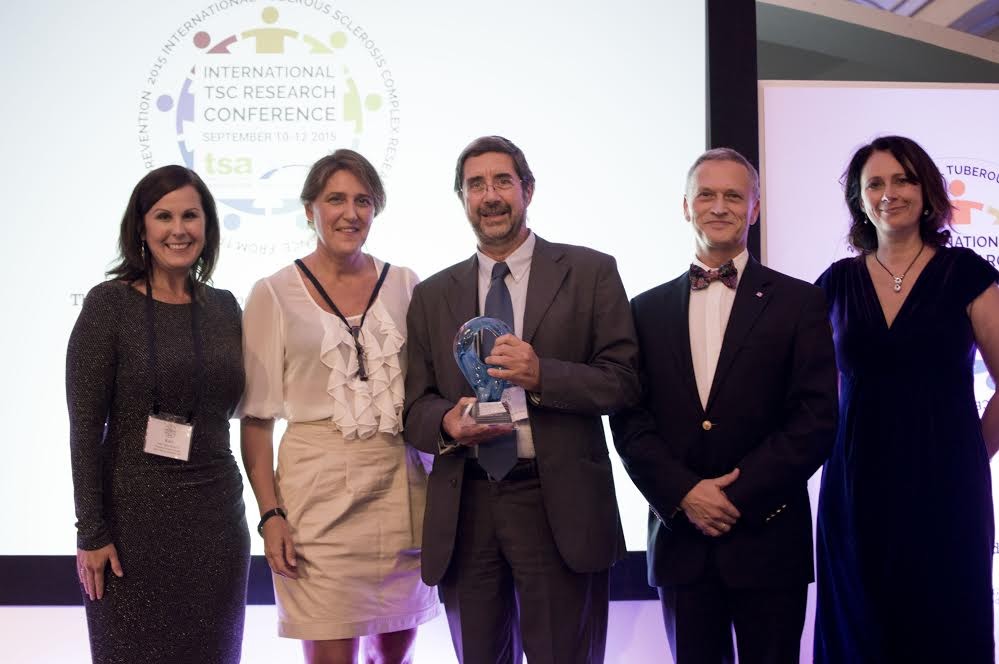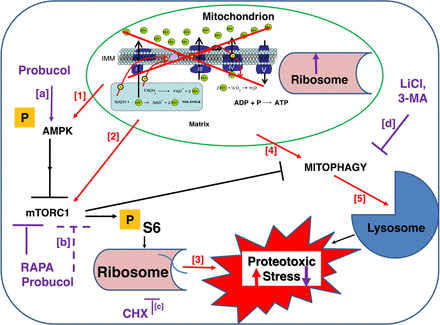
- Details
- ICNA
- News
- Hits: 784
The ICNA congratulates Professor Paolo Curatolo on receiving the Manuel Gomez Award 2015 from the Tuberous Sclerosis Alliance (TSA). This prestigious award has been given in honour of his pioneering efforts in improving the understanding and treatment of Tuberous Sclerosis. The award was given at the International Tuberous Sclerosis Conference held in Windsor, United Kingdom in September 2015.
Professor Paolo Curatolo is currently the Director, Pediatric Neuroscience Unit"Tor Vergata" University Hospital,Rome, Italy and has been the President of the International Child Neurology Association from 2002-2006. Besides numerous publications on the topic, he is also the author of "Tuberous Sclerosis Complex: from basic science to clinical phenotypes", published in 2003 on the International Review of Child Neurology Series,
Read More
- Details
- Coriene Catsman-Berrevoets
- News
- Hits: 642
The spread of scientific and clinical child neurological knowledge and expertise among the congress participants from all different backgrounds has been an important priority for the Educational Committee of ICNC 2016. For this reason we offer an extensive, high level, innovative and complimentary teaching program.
The teaching program consists of daily breakfast courses that introduce and refresh the knowledge on the leading topic of the day. Topics are related to the important CNS neuroanatomical structure and its most relevant disorders. They are: Grey matter on Monday, White matter on Tuesday, Cerebellum on Wednesday and Muscle and Peripheral Nerves on Thursday Two interactive meet the expert tutorial sessions and case consultations with experts in the field will be organised in the late afternoon on Monday (Movement Disorders) and Tuesday (MRI Pattern recognition)
The two evening teaching classes cover, Basic principles and clinical relevance of immune mediated diseases (Monday) and Neurophysiology (Tuesday). Please note that registration for this free teaching class is necessary.
A complementary light dinner buffet preceding the teaching class is served for registered participants.. The teaching program is not only aimed at trainees but also at qualified paediatric neurologists who want to refresh their knowledge on different topics. We invite you all to participate in this attractive program.
Read More
- Details
- ICNA
- News
- Hits: 639
A new animal study shows that traumatic brain injury (TBI) affects the body as well as the brain and that treatment with angiotensin II receptor blocker antihypertensive drugs block the production of mediators of inflammation.
In the study, published online today in The American Journal of Pathology, the Georgetown University Medical Center (GUMC) research team reveals for the first time that experimental traumatic brain injury results in a systemic inflammatory response primarily in the liver. Using a male mouse TBI model of controlled cortical impact injury (CCI), Villapol et al (Am J Pathol 2015, 185:XXXX–XXXX) examined liver and plasma expression of the early APR biomarker serum amyloid A1 (SAA1). Besides the expected immediate up-regulation of SAA1 in the liver in response to CCI, increases in neutrophil and macrophage infiltration, apoptosis, and CXCL1 and CXCL10 chemokine levels were observed.
A delayed increase in the mRNA expression of angiotensin II receptor (AT1R) was also noted. The investigators also discovered that in mice, small doses of telmisartan, an Angiotensin II receptor blocker (collectively called sartans) used in the treatment of hypertension, 1 hour post injury significantly decreased liver SAA1 levels and CXCL10 mRNA expression after 3 days without affecting expression of CXCL1 or the number of apoptotic cells or infiltrating leukocytes. This led the authors to suggest that telmisartan could be therapeutic for blocking the hepatic acute phase response following TBI.
In earlier research, Villapol and her colleagues (Villapol et al., 2015) observed that telmisartan and another hypertension drug, candesartan, when administered six hours after experimental TBI (mice, controlled cortical impact model) had significantly reduced inflammation, neuronal loss, brain swelling and improved cognitive outcome at one month post injury. The six hours time to treatment is very important since it is very realistic in terms of the time frames, treatment can be instituted following traumatic brain injury. The authors are optimistic that these encouraging results will lead for clinical trials of these drugs in traumatic brain injury.
Citation:
- Villapol, S., Balarezo, M. G., Affram, K., Saavedra, J. M., & Symes, A. J. (2015). Neurorestoration after traumatic brain injury through angiotensin II receptor blockage. Brain. doi:10.1093/brain/awv172
- Villapol, S., & Saavedra, J. (2015). Neuroprotective effects of angiotensin receptor blockers. American Journal of Hypertension, 28(3), 289–99. doi:10.1093/ajh/hpu197
Read More

- Details
- ICNA
- News
- Hits: 637
A study recently published in the journal Human Molecular Genetics by Marni J. Falk and colleagues from the Mitochondrial-Genetic Disease Clinic at The Children's Hospital of Philadelphia (CHOP) holds great promise for developing new treatments for patients with mitochondrial disorders
Extra-mitochondrial mechanisms including dysregulated translation and the increased autophagy contribute to the pathophysiology of respiratory chain disorders. They showed that drugs which partially inhibit these cellular processes offer novel treatment strategies in mitochondrial disorders.
In translation, messenger RNA (mRNA) which is produced by transcription from DNA is decoded by cellular ribosomes to produce a specific amino acid chain, or polypeptide. Autophagy is the basic cellular mechanism by which unnecessary or dysfunctional cellular components are degraded by lysosomal action. Both these processes have been shown to be dysregulated in mitochondrial disorders.
Falk's team showed that nicotinic acid, a form of vitamin B3 (niacin), improved lifespan and metabolism in a mitochondrial disease animal model, microscopic C. elegans worms, by restoring normal activity to cellular signalling pathways. Rapamycin, an antibiotic and immunosuppressant, improved kidney disease in mice with a mitochondrial disorder caused by coenzyme Q deficiency by directly inhibiting the central translational regulator (mTORC1). Probucol (used in the past as a cholesterol-lowering drug) which also inhibits mTORC1 improved lifespan and physiological functioning in worms with mitochondrial respiratory chain complex I deficiency Partial inhibition of translation by cycloheximide an antibiotic, or of autophagy by lithium chloride, prescribed for patients with bipolar disorder, improved viability, preserved cellular respiratory function and induced mitochondrial translation.
These findings offer novel treatment strategies in the diverse array of mitochondrial disorders involving respiratory chain dysfunction. Further research should investigate how specific subgroups of patients with mitochondrial disorders could benefit from these and similar drugs. Mitochondrial Disease Clinical Center at CHOP is planning early-stage clinical research trials to investigate these novel treatment strategies further.
Read More

- Details
- ICNA
- News
- Hits: 1150
On behalf of the International Child Neurology Association, it is my great pleasure to welcome you to the 14th International Child Neurology Congress being held in Amsterdam, the Netherlands, from May 1-5th, 2016. Our congress theme is 'Bridging Worlds' with the aim of providing an appreciation of Childhood Neurological Disorders from a Global Perspective with strong representation from all six major geographic regions.
The scientific program will feature internationally recognized experts who will provide the latest advances in different subspecialties of child neurology combined with a strong educational program through breakfast courses, meet the expert sessions and master classes. We also hope to facilitate open dialogue between clinicians and neuroscientists from resource-limited and resource- enriched regions in order to lay the groundwork for future collaborative research networks. These networks would link clinicians involved in the careful phenotyping of unique clinical populations afflicted with specific neurological diseases with researchers in state-of-the-art research laboratories directed toward characterizing the genotypes and creating in vitro and in vivo disease models, in order to increase understanding of the underlying pathophysiological disease mechanisms, for the development of specific interventional therapies. These new therapies could then be translated back to the clinical populations and be rigorously tested through prospective randomized double-blind controlled clinical trials to evaluate the true efficacy of the new therapies. This would benefit the affected children and their families, their caregivers and the investigators, thus moving the field forward. This will also set the stage for the launching of our research portals on www.ICNApedia.org for the linking of clinical and basic science investigators.
Several exciting new ICNA initiatives will be launched at the ICNC2016 as follows:
- There will be a presentation of the results of the first funded Global Burden of Disease Seed Grants. These competitive seed grant opportunities, which have been offered through ICNApedia.org to neurology residents, fellows and junior staff, aim to capture pilot data on the global burden of neurological morbidity, quality of life, and mortality specific to major neurological diseases in resource-limited regions (e.g. CNS Tb, HIV, malaria, CP). These pilot proposals consist of 2-3 month international fellowships linked to established investigators at target sites which have high prevalence for a given disease (e.g. current sites include South Africa, Botswana, India) where study ethics approval is in place along with robust epidemiological study design. This pilot data will then form the basis for future large scale epidemiologic studies by the senior investigator with the ultimate goal of generating recommendations for targeted cost-effective, site-specific improvements in health care policies, in conjunction with the local health care services and infrastructure (Health Policy Level).
- A symposium will be dedicated to a review of the integral components of solid clinical research methodology and rigorous study design along with the application of appropriate statistical methodology. There will also be a review of the CONSORT guidelines for writing clinical research papers and information will be provided on existing courses and sites offering training in these methodologies.
- The ICNC2016 will also mark the launching and first meeting of the Council of the Future Leaders of ICNA who will be comprised of outstanding, regionally nominated senior child neurology residents, fellows and junior faculty who will meet in Amsterdam to establish their mandate, goals for the future clinical, research and educational programs of ICNA, metrics for success in achieving these goals and perceived obstacles. They will also form the first editorial board for the Resident and Fellow section of our new electronic journal JICNA.
Please join us for a scientifically stimulating ICNC2016 program in an atmosphere of warm collegiality set in the elegant city of Amsterdam which embodies Old World Charm amongst seas of vibrant multicoloured tulips and myriads of historic canals and bridges in the home of the magnificent works of Van Gogh and Rembrandt.
Read More

